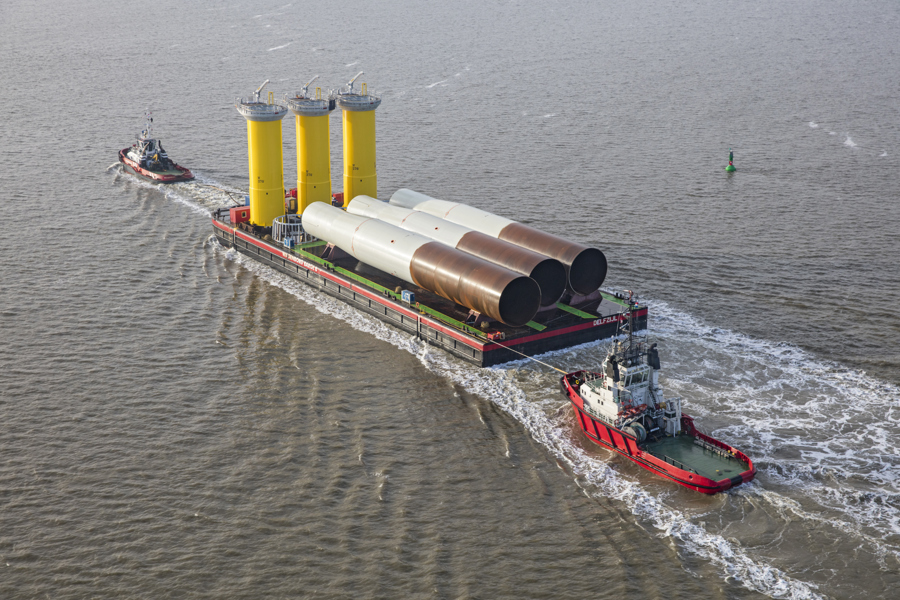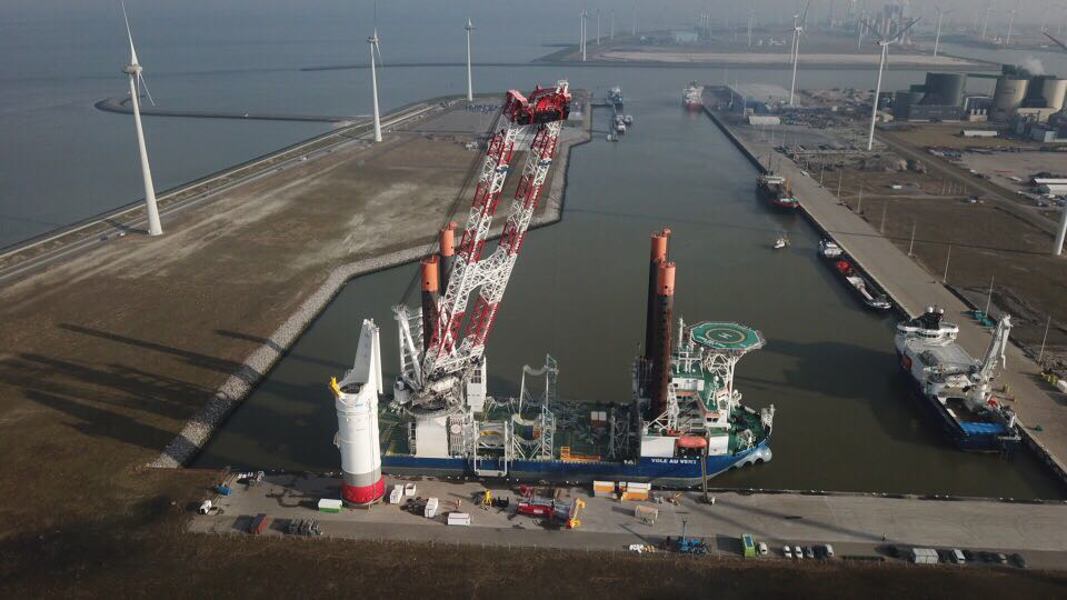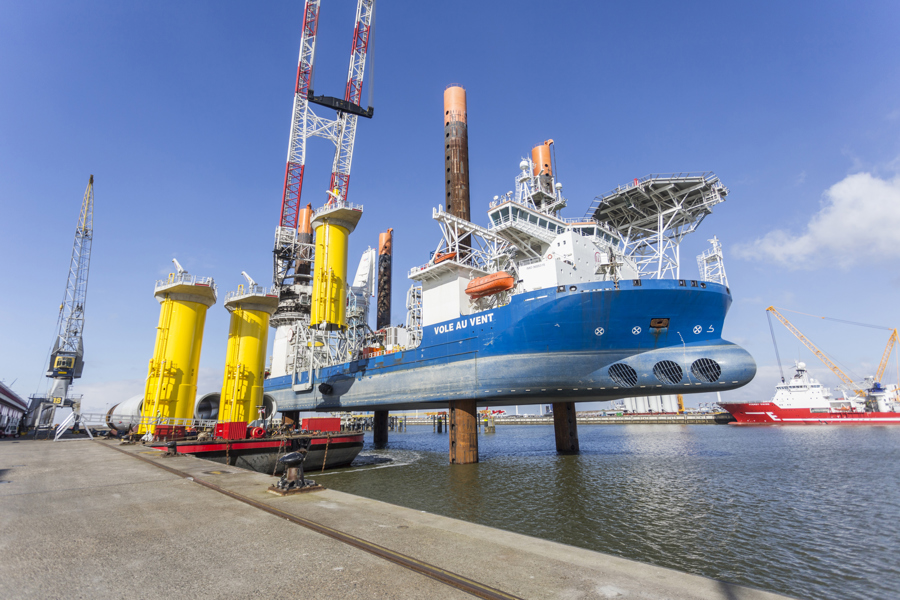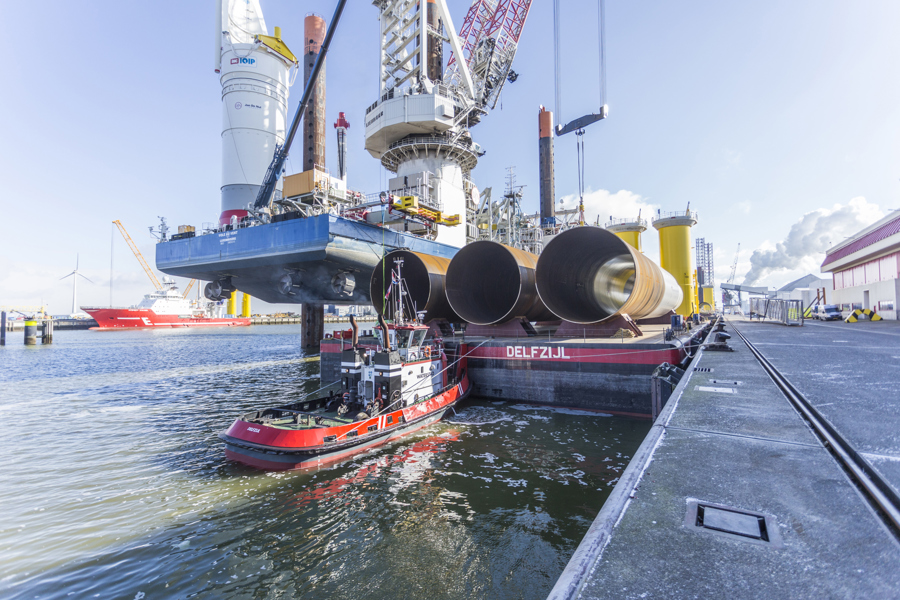
Wagenborg at the basis of the offshore wind farm Borkun Riffgrund II - literally!
Ørsted, Jan de Nul and Wagenborg
In 2016, the Danish company DONG Energy, now Ørsted, decided to build the Borkum Riffgrund 2 offshore wind farm in German territorial waters. Ørsted commissioned the Jan de Nul Group to transport and install 36 monopiles and transition pieces. Those components were constructed by Steelwind Nordenham. To transport all the components, Jan de Nul in turn called in the aid of Wagenborg. Jan de Nul is responsible for installing the foundations with its jack-up vessel “Vole au Vent” from the Wagenborg terminal at Eemshaven.
Strategic location
Eemshaven is extremely well located for many of the wind farms under construction or in operation. The Wagenborg terminal there is well equipped to accommodate (offshore) logistics projects. It has numerous facilities such as work areas, service locations, storage facilities, various quays, a RORO jetty, and offices. This makes it ideal as a base, marshalling, or service port. The terminal has already proved its logistical value for wind farms such as BARD 1, Borkum West 2, Alpha Ventus, and Global Tech 1.
Preparations
In recent months, the parties involved have worked hard to prepare for construction of Borkum Riffgrund 2. While Steelwind Nordenham concentrated on manufacturing the wind turbine foundations, Wagenborg prepared for transporting this heavy cargo. It deployed two specially equipped identical pontoons (100 × 33 × 7.6 metres) for the transport operation. The two pontoons, Wagenborg Barge 7 and Wagenborg 8, were first equipped with special saddles and facilities, such as ballast pumps, before they came into action. The work was carried out at the Royal Niestern Sander shipyard. Each pontoon is equipped to transport three monopiles, three transition pieces, and three anode cases per trip. Wagenborg’s engineers carried out detailed calculations for this method of transport, taking account of stability and the sea conditions that could be expected. That approach was by no means overcautious, given that the monopiles weigh up to almost 900 tonnes each and are 8 metres in diameter. And the transition pieces weigh 400 tonnes and are 7.45 metres in diameter!
Integrated monopile installation system
To install the foundation piles for the wind farm, the Jan de Nul Group is using an offshore pile driver developed by IHC IQIP, with a noise mitigation system. This integrated monopile installation system ensures that the noise level when driving the monopiles out at sea is reduced as much as possible so as to minimise disturbance to the marine flora and fauna. The hydraulic pile driver drives the monopiles down into the seabed.
The various components of the integrated monopile installation system were manufactured in Bilbao (Spain) and Genemuiden (NL). Wagenborg transported the various components to Eemshaven and assembled them there with the aid of a 700-tonne mobile crane. The system was then hoisted on board the installation vessel Vole au Vent. This is a challenging and complex subproject in terms of both logistics and engineering.

Twelve voyages
At the end of February, the Vole au Vent was ready and waiting to take the first cargo of foundations on board. Shortly before, Wagenborg had collected the first monopiles, transition pieces, and anode cages from Nordenham. A fully loaded Wagenborg Barge 8 was positioned alongside the Vole au Vent by Wagenborg’s tugs Waterman and Waterstroom, after which the jack-up vessel hoisted the components on board one by one. The ship could then leave Eemshaven temporarily so as to install the components out in the North Sea. While it was away, Wagenborg had time to load a new pontoon with foundation components in Nordenham and ship them to Eemshaven. After twelve vayages with the two pontoons, all the foundations had been safely shipped to Eemshaven.







